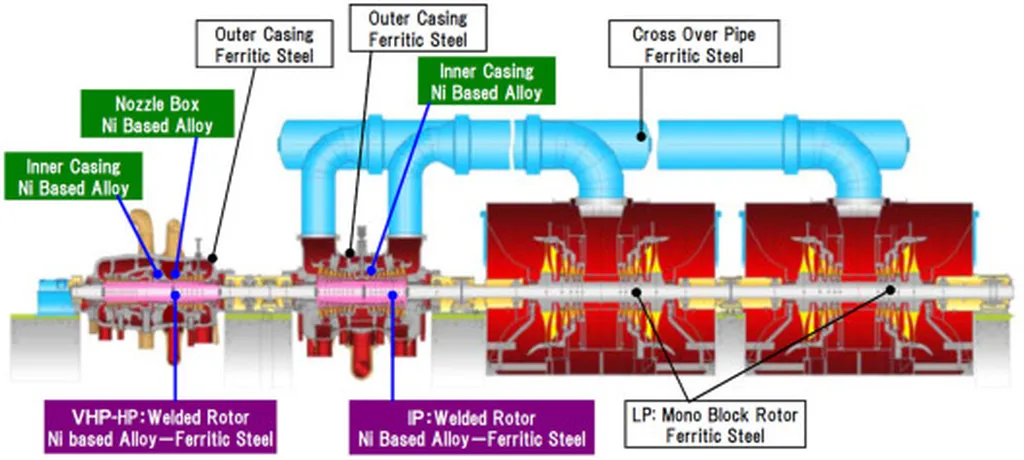In the heart of China’s industrial sector, a groundbreaking study is set to revolutionize the energy industry, particularly in the realm of ultra-supercritical steam turbine rotors. Researchers from Tianjin Heavy Industries Research & Development Co., Ltd. and Northwestern Polytechnical University have published a significant paper in the journal *Teshugang*, which translates to “Iron and Steel” in English. The study delves into the microstructure and homogenization process of large ingots of as-cast condition C650R nickel-based alloy, a critical material for high-temperature applications.
The research, led by Kou Jinfeng and his team, focuses on the casting microstructure of 12-ton ingots used in 650°C ultra-supercritical steam turbines. These turbines are pivotal in modern power generation, offering higher efficiency and lower emissions. The team employed optical microscopes, scanning electron microscopes, and energy dispersive spectrometers to analyze the ingots, which were smelted using a three-process method: VIM (Vacuum Induction Melting), PESR (Pressurized Electro-Slag Remelting), and VAR (Vacuum Arc Remelting).
The study revealed significant segregation in the ingots, with elements like molybdenum (Mo), niobium (Nb), and titanium (Ti) segregating between dendrites. “The main precipitated phase within the crystal is a MC-type primary carbide rich in Mo, Nb, Ti, and Zr,” explained Kou. These carbides have an irregular shape, with small granular M23C6 primarily at the grain boundaries, along with a small amount of irregular MC-type primary carbide.
The researchers also investigated the microstructure after different homogenization treatments and compared the high-temperature thermoplasticity before and after these treatments. They found that the homogenization process for a 12-ton C650 nickel-based alloy ingot should be at 1,200°C to 1,220°C with a holding time of over 96 hours. This process significantly improves high-temperature plasticity compared to the cast state, laying a favorable foundation for the smooth casting of the ingot.
The implications of this research are profound for the energy sector. Ultra-supercritical steam turbines operate at extremely high temperatures and pressures, requiring materials that can withstand these harsh conditions. The C650R nickel-based alloy, with its enhanced high-temperature plasticity, could lead to more efficient and reliable turbines, ultimately reducing energy costs and environmental impact.
“This research is a significant step forward in understanding and optimizing the microstructure of large ingots used in high-temperature applications,” said Bai Yaguan, a co-author of the study. “It provides a robust foundation for future developments in the field of energy generation.”
The study’s findings are not just academic; they have real-world commercial impacts. As the demand for cleaner and more efficient energy solutions grows, the ability to produce high-quality, large ingots of nickel-based alloys becomes increasingly important. This research could pave the way for advancements in turbine technology, benefiting power plants and other energy-intensive industries.
In the rapidly evolving landscape of energy generation, this study stands as a testament to the power of scientific research in driving industrial innovation. As Kou and his team continue to push the boundaries of materials science, the energy sector can look forward to a future of enhanced efficiency and sustainability.

